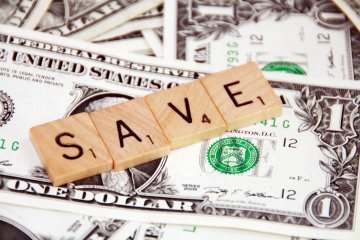A Simple Method for Saving Money
How often do you look at your grocery receipts and congratulate yourself for saving money? Grocers today have figured out that by bundling savings deals into their prices they earn goodwill from consumers. Naturally, many grocers now tell you how much “you saved today” or “you could have saved today” somewhere on your receipts.

If your grocer is telling you that you saved money on your purchases, you could enter all those prices into a database or spreadsheet and try to track them over time. Some people actually do this. However, prices tend to rise due to inflation, or because grocers pick up new brands. So tracking prices over time to compare your purchases is not as surefire a method for managing money as it might seem.
The grocer may have given you a simpler tool, though. That “you saved X dollars today” message may be just a little bit of hype because you know all the grocers are trying to be competitive, but it can also be a signal to you to take action and do some real saving.
First, Learn the Difference Between “Savings” and “Savings”
The fact your grocer tells you that you saved $10 today doesn’t necessarily mean you saved $10. Maybe they did have a real special and normally you would buy your groceries for $10 more. Some people do try to time their purchases at the grocery store for when items are on clearance or periodic markdown.
But if you use coupons your savings message may reflect real savings off normal retail prices. In which case, job well done! But though some people are very good at using coupons most of us don’t actually save much money with coupons. So while I applaud your use of coupons, I know already you’re not really saving much money with them.
Why? Because you don’t actually SAVE that money.
Put Your “Savings” into REAL Savings
Here is an easy promise you can make and start keeping today. The next time you go to the grocery store, look at how much money you saved on your purchases through coupons and clearance. Even if that is only $1, immediately transfer that money to your household savings account.
You are probably banking online so transferring money to your savings account should be pretty easy these days. You may even have a phone app from your bank that you can use while you are sitting in the car at the grocery store.
By transferring your “savings” to savings immediately you ensure that you don’t spend that money somewhere else. So if you save $20 at the grocery store every week you’ll save about $1000 a year just putting that “savings” into a real savings account.
Saving Money Is Not About Finding Low Prices
Just because you can buy something half-off the original retail price doesn’t mean you have actually saved any money. In fact, all you have done is SPEND money.
But if you are spending money wisely (only buying things you need and getting the best deals possible) then you should reward yourself by putting a little bit of your savings into real savings. This way you’ll be able to save up for important purchases (or to invest your money later).
If you are one of those people who takes these purchase-based “savings” and spends it on little rewards for yourself, think about saving HALF of your purchase-based “savings”. You don’t have to make a total sacrifice but the more money you put back each week the faster your real savings account will grow.
Always Spend Less Than You Earn
Remember the real secret to savings success is to only spend less money than you actually bring home. Never spend all your money. You won’t have any when you really need it if you just spend what you make.